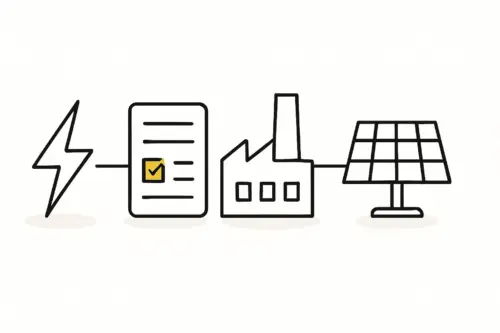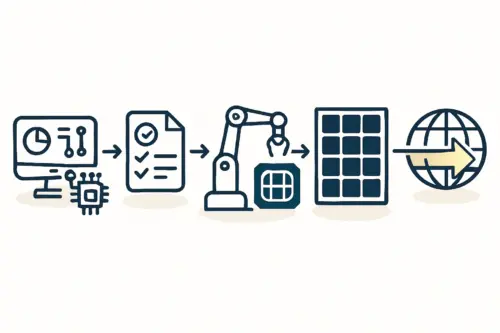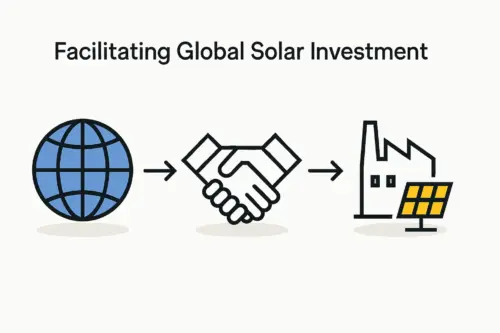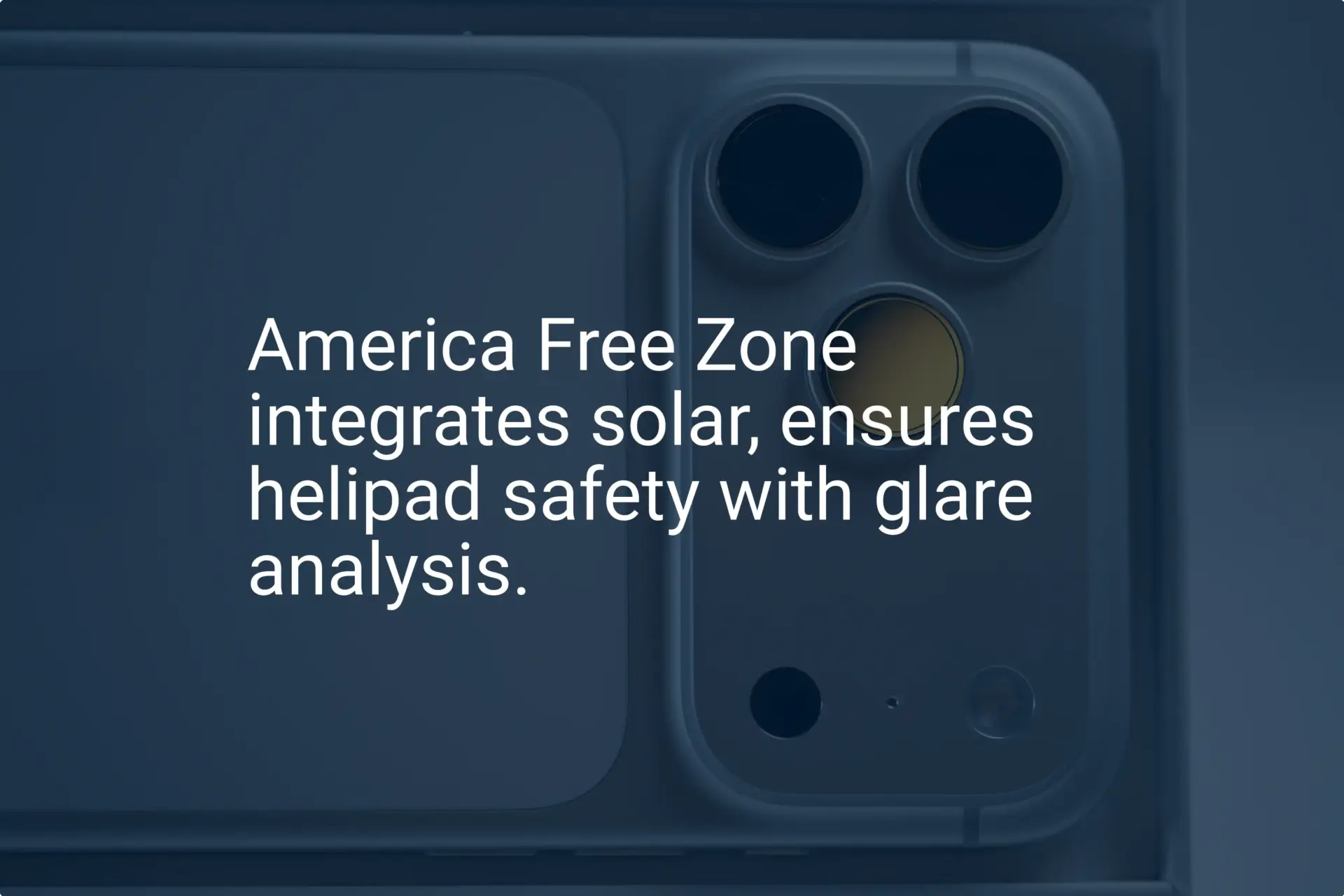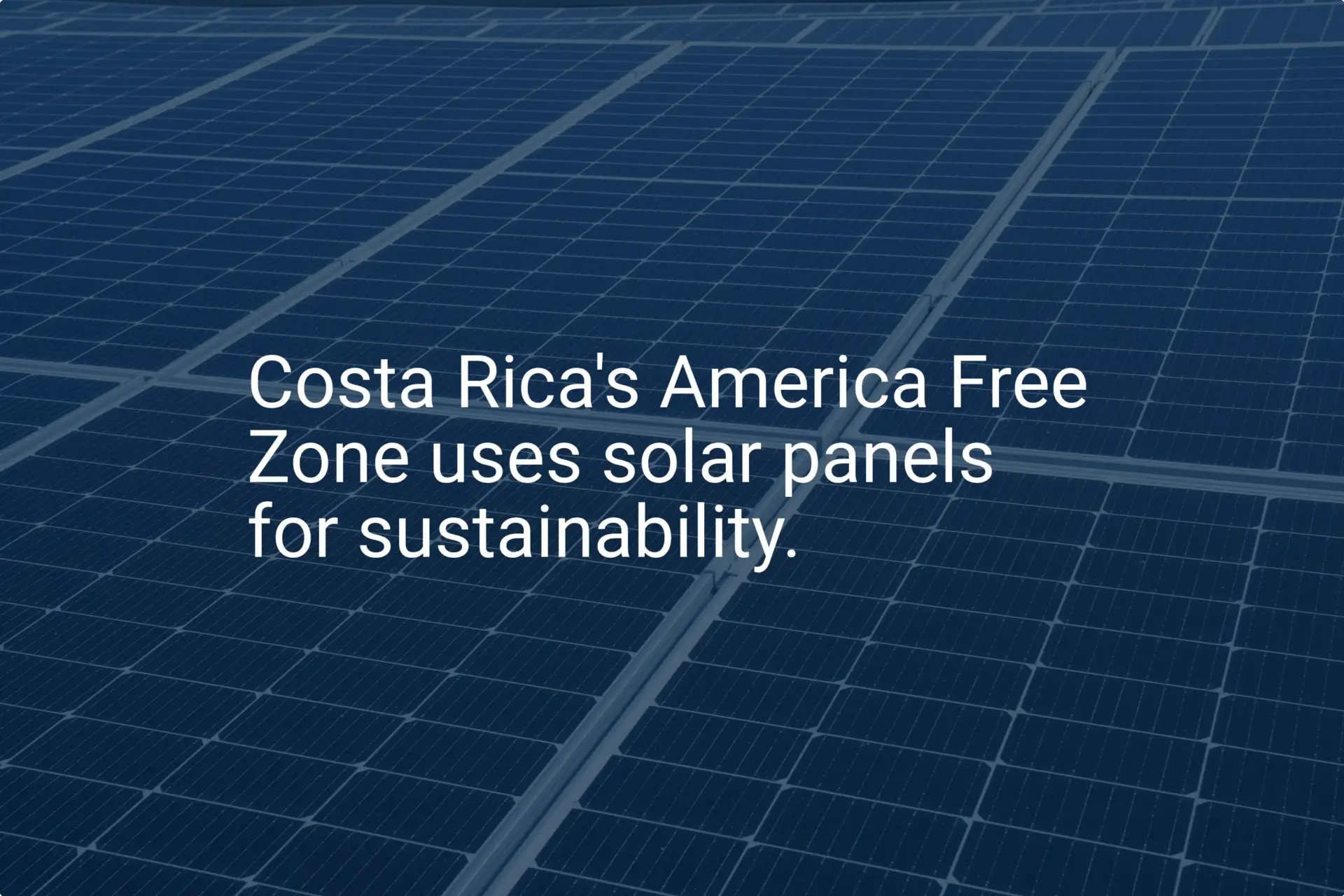For an entrepreneur planning a solar module assembly plant in Costa Rica, the standard starting point is a global procurement model: importing a complete Bill of Materials (BOM) from an established supplier in Asia.
While this approach offers simplicity, it also introduces significant risks related to shipping costs, lead times, and import duties. This raises a critical question: could a more resilient and cost-effective supply chain be built by sourcing key components from within Costa Rica itself?
This analysis investigates that potential by examining the nation’s existing industrial capabilities—from aluminum extrusion to plastics manufacturing. The goal is to identify viable opportunities to strengthen the supply chain, reduce logistical complexities, and enhance the overall business case for domestic solar production.
The Global Supply Chain Challenge for New Solar Manufacturers
For a new entrant into the solar industry, the default strategy is often to procure a complete “module-in-a-box” kit. This kit includes every necessary component, from solar cells and glass to aluminum frames and junction boxes. This convenience, however, comes with several strategic challenges:
- High Logistical Costs: Shipping bulky materials like glass and aluminum frames across the globe incurs substantial freight and insurance expenses.
- Import Tariffs and Taxes: Depending on trade agreements, import duties can add a significant percentage to the total component cost, impacting the final module price.
- Long Lead Times: An ocean freight journey from Asia to Central America can take weeks, creating inventory challenges and reducing operational flexibility.
- Currency Fluctuation Risk: Transactions are typically conducted in US dollars or euros, exposing the business to adverse movements in foreign exchange rates.
- Lack of Control: Relying on a single, distant supplier for all materials creates a single point of failure that can halt production entirely.
These factors build a strong case for exploring local alternatives for components that do not require the massive scale of solar cell or specialized glass production.
Evaluating Costa Rica’s Industrial Landscape for Solar Components
Costa Rica has a surprisingly robust and diversified industrial base, largely developed to support its successful medical device, electronics, and food processing sectors. This existing expertise provides a solid foundation for manufacturing several key solar module components.
Aluminum Frames: A Strong Candidate for Localization
The aluminum frame is one of the heaviest and bulkiest parts of a solar panel. Costa Rica already has an established aluminum extrusion industry capable of producing high-quality profiles for construction and other applications.

- Existing Capabilities: Local manufacturers often work with 6000-series aluminum alloys—the industry standard for solar module frames—and have experience with precision cutting, machining, and surface treatments like anodization.
- Quality Verification: The critical step is ensuring a local supplier can meet the tight mechanical tolerances and consistent quality required for automated assembly lines. A thorough supplier audit, a process J.v.G. Technology often undertakes for its turnkey projects, is essential to verify these capabilities.
- Business Impact: Sourcing frames locally could reduce their landed cost by an estimated 15–25% by eliminating international shipping and import duties. It also allows for just-in-time delivery, which reduces inventory requirements. Exploring a complete bill of materials for a solar panel is a good first step to understanding all the components involved.
Junction Boxes and Connectors: Leveraging Plastics Expertise
The junction box, a critical safety and electrical component, is made primarily from high-grade plastics. Costa Rica’s advanced manufacturing sector, particularly in medical devices, has deep expertise in precision plastic injection molding.

Ready to make big Profits?
The solar Industry is Booming
WE HELP NEWCOMERS to the solar industry start their own solar module production line. Customers can make BIG PROFITS by selling modules and finding investors, without wasting money and time on things they don't need!
- Existing Capabilities: Local firms are proficient in working with engineering-grade polymers and can produce complex, high-tolerance plastic enclosures. The labor-intensive process of assembling cables, connectors, and diodes into the final junction box also aligns well with local skill sets.
- Component Sourcing: While the bypass diodes themselves would likely still be imported, the plastic housing, cables, and final assembly could be handled domestically.
- Certification Hurdles: The primary challenge is ensuring that locally produced junction boxes can meet stringent international safety certifications (such as UL or TÜV). This requires investment in robust testing and quality control processes.
Backsheets and Encapsulants (EVA/POE): A More Difficult Proposition
Materials like backsheets (the protective rear layer) and encapsulants (like EVA or POE films) are products of a specialized chemical industry. The manufacturing process requires significant capital investment and scale to be cost-effective. Currently, there is little evidence of existing capacity in Costa Rica for these specific materials, making them poor candidates for initial localization efforts.
Quality, Cost, and Capacity: A Realistic Assessment
Transitioning from imported to locally sourced components requires a pragmatic evaluation of three key factors.
Meeting International Standards (IEC 61215 & IEC 61730)
There can be no compromise on quality. Every component, regardless of origin, must ensure the final solar module can pass certification tests like IEC 61215 (performance) and IEC 61730 (safety). For a prospective manufacturer, this involves:
- Supplier Audits: Conducting on-site inspections of potential local suppliers to assess their quality management systems, production processes, and testing capabilities.
- Sample Testing: Procuring sample components (e.g., a batch of aluminum frames) and using them to build prototype modules for internal and third-party laboratory testing.
- Process Integration: Ensuring the local components are fully compatible with the planned automated assembly equipment.
The Business Case: Calculating the Landed Cost
A simple per-unit price comparison is insufficient. The true financial benefit comes from comparing the “landed cost” of an imported component against the final cost of a locally sourced one.
- Imported Component Landed Cost: Purchase Price + International Freight + Insurance + Import Duties + Port Fees + Inland Transportation.
- Local Component Cost: Purchase Price + Local Transportation.
The analysis must also factor in the financial benefits of reduced inventory and improved cash flow that come with shorter supply chains.
Scaling Production: Can Local Suppliers Keep Pace?
A local supplier must have the capacity and willingness to meet the demands of a solar factory. For a 50 MW assembly line, this translates to producing approximately 2,500 aluminum frames per week. This requires a commitment from the supplier to dedicate a production line and manage raw material inventory accordingly—the foundation of a strong business partnership. For those new to the field, understanding the complete process of setting up a solar panel factory provides essential context for these capacity decisions.
A Phased Approach to Building a Resilient Local Supply Chain
For an entrepreneur in Costa Rica, the most prudent strategy is a phased transition to local sourcing:
- Phase 1 (Year 1): Begin by sourcing the lowest-risk, highest-impact components locally. This typically includes aluminum frames and all packaging materials (cardboard boxes, corner pieces, pallets).
- Phase 2 (Year 2-3): Develop a partnership with a local plastics manufacturer to assemble junction boxes. This may start with assembling imported components before transitioning to locally molded housings.
- Phase 3 (Long-Term): As the domestic solar market grows, conduct feasibility studies for higher-investment components like solar glass, creating a more comprehensive industrial ecosystem.
By localizing the supply chain, a Costa Rican solar module manufacturer can create a more cost-competitive product while contributing to the nation’s industrial development, creating jobs and fostering technical expertise under the respected “Esencial Costa Rica” brand.

Frequently Asked Questions (FAQ)
What are the main non-cell components of a solar module?
The primary components besides the solar cells are the tempered front glass, the aluminum frame, the polymer backsheet, the encapsulant films (EVA or POE), and the junction box with its associated cables and connectors.
Why is relying solely on imports a risk for a new factory?
Relying exclusively on imports exposes a business to logistical delays, shipping damage, currency fluctuations, and geopolitical trade disruptions. A disruption in a single component can halt the entire production line, creating significant financial and operational risk.
How can a new manufacturer verify the quality of a local supplier?
Verification is a multi-step process. It starts with a formal audit of the supplier’s facilities and quality management system. Next, sample components are used to build test modules, which should undergo rigorous internal testing before being sent to an accredited laboratory for official certification.
Are there government incentives in Costa Rica for local manufacturing?
Costa Rica offers various incentives, particularly for businesses operating within its Free Trade Zone (FTZ) regime. These can include exemptions from import duties on raw materials and equipment, as well as other tax benefits. Entrepreneurs should consult with local investment promotion agencies like CINDE or PROCOMER to explore applicable programs.


